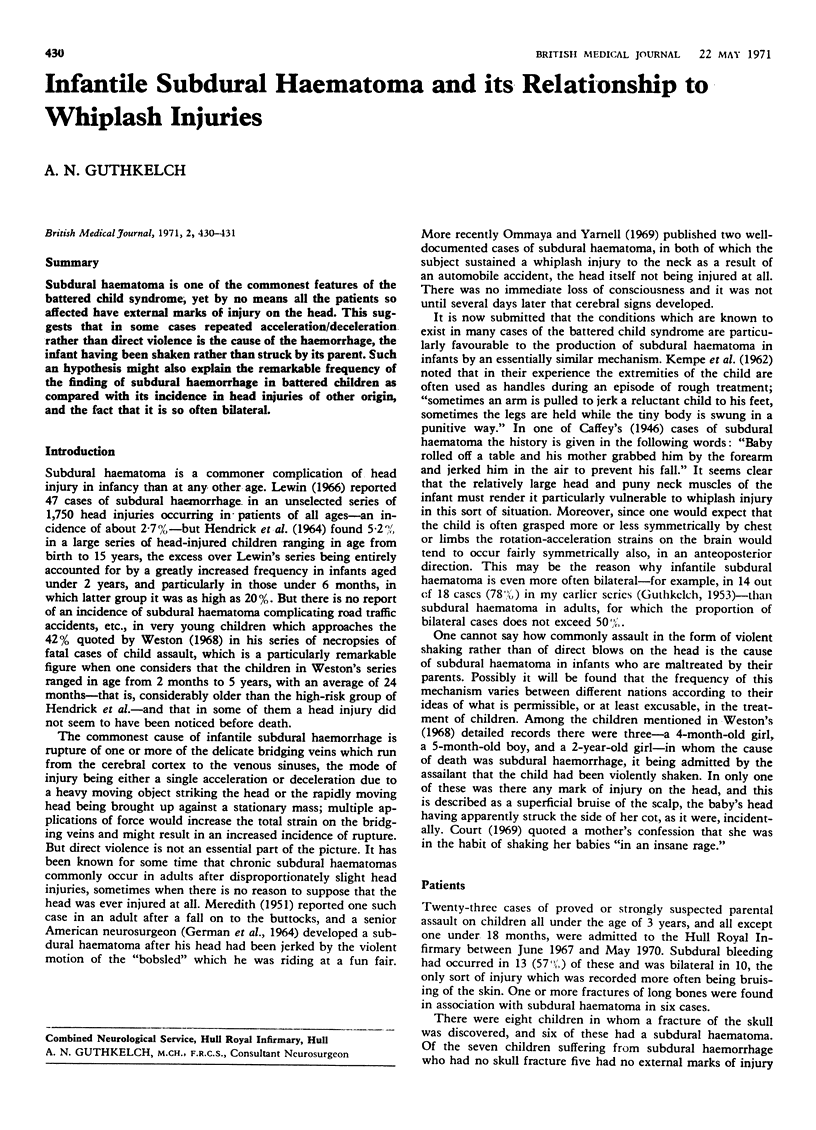Abstract
Subdural haematoma is one of the commonest features of the battered child syndrome, yet by no means all the patients so affected have external marks of injury on the head. This suggests that in some cases repeated acceleration/deceleration rather than direct violence is the cause of the haemorrhage, the infant having been shaken rather than struck by its parent. Such an hypothesis might also explain the remarkable frequency of the finding of subdural haemorrhage in battered children as compared with its incidence in head injuries of other origin, and the fact that it is so often bilateral.
Full text
PDF

Selected References
These references are in PubMed. This may not be the complete list of references from this article.
- GUTHKELCH A. N. Subdural effusions in infancy: 24 cases. Br Med J. 1953 Jan 31;1(4804):233–239. doi: 10.1136/bmj.1.4804.233. [DOI] [PMC free article] [PubMed] [Google Scholar]
- German W. J., Flanigan S., Davey L. M. Remarks on subdural hematoma and aphasia. Clin Neurosurg. 1964;12:344–350. doi: 10.1093/neurosurgery/12.cn_suppl_1.344. [DOI] [PubMed] [Google Scholar]
- Hendrick E. B., Harwood-Hash D. C., Hudson A. R. Head injuries in children: a survey of 4465 consecutive cases at the hospital for sick children, Toronto, Canada. Clin Neurosurg. 1964;11:46–65. doi: 10.1093/neurosurgery/11.cn_suppl_1.46. [DOI] [PubMed] [Google Scholar]
- Ommaya A. K., Faas F., Yarnell P. Whiplash injury and brain damage: an experimental study. JAMA. 1968 Apr 22;204(4):285–289. [PubMed] [Google Scholar]
- Ommaya A. K., Yarnell P. Subdural haematoma after whiplash injury. Lancet. 1969 Aug 2;2(7614):237–239. doi: 10.1016/s0140-6736(69)90005-1. [DOI] [PubMed] [Google Scholar]


